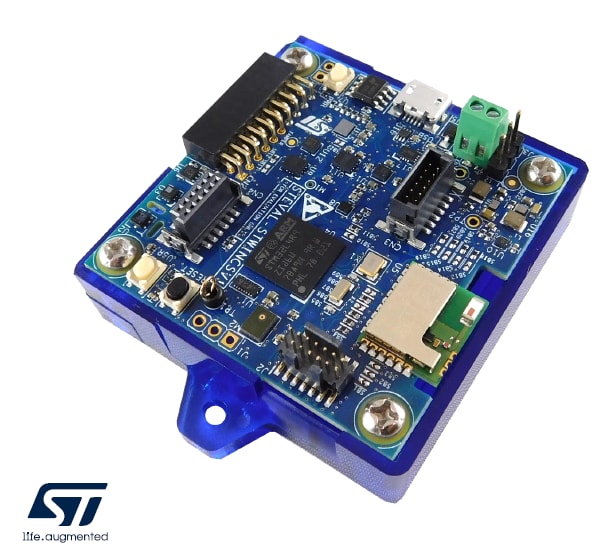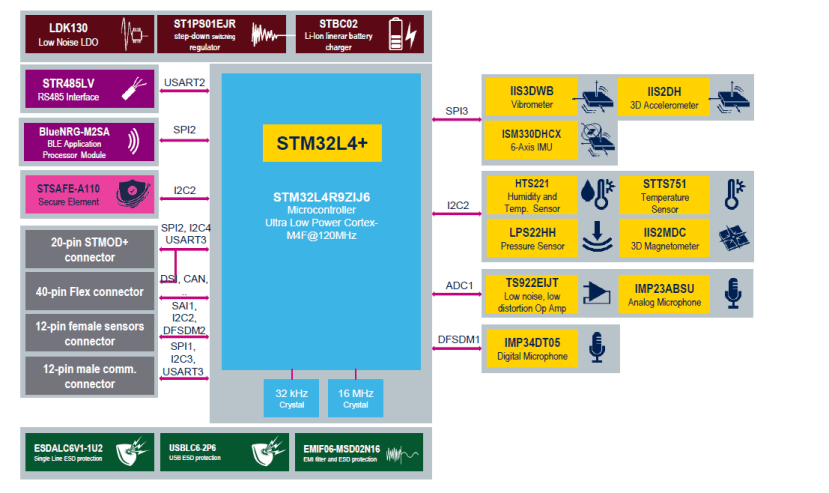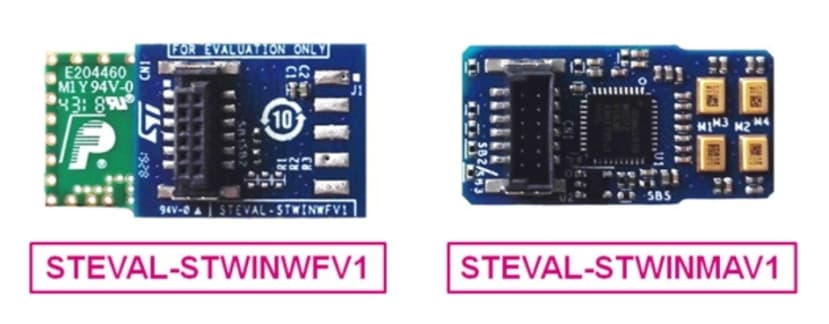How to build your first Predictive Maintenance prototype?
Follow articleHow do you feel about this article? Help us to provide better content for you.
Thank you! Your feedback has been received.
There was a problem submitting your feedback, please try again later.
What do you think of this article?
What is Predictive Maintenance?
Predictive Maintenance (PdM) is a technique commonly used in industry to identify potential failures associated with expensive industrial assets - including pumps, compressors and motors. It is designed to significantly reduce the likelihood of failure by utilising real-time data on the equipment condition. This can result in tremendous savings in costs associated with less downtime, maximising the useful life of the equipment and ensuring overall system reliability.
What is Preventive Maintenance?
Preventive Maintenance, also known as preventative maintenance or PPM, involves performing scheduled inspections - irrespective of whether there is a breakdown or not. With the increasing frequency of preventative maintenance activities, factories face the problem of increased costs due to long suspension times and high maintenance costs. However, with the emergence of non-destructive testing technologies and predictive modelling algorithms, it is becoming more feasible to accurately forecast when maintenance will be required without the scheduled inspection.
Continuous Monitoring of an equipment’s state through dedicated sensors is commonly referred to as Condition Monitoring (CM) and is a major part of Predictive Maintenance. The sensors are attached to the equipment under investigation and the collected data is analysed to identify any abnormalities.
SensorTile Wireless Industrial Node
If building your own industrial IoT application seems like an impossible task, SensorTile Wireless Industrial Node (STEVAL-STWINKT1B) (210-2301) might be your solution.
The STEVAL-STWINKT1B is a fast prototyping kit for industrial IoT designs, but it is especially useful for Predictive Maintenance and Condition Monitoring applications. The embedded sensors onboard allow real-time measurement and processing of a wide range of condition parameters. The STEVAL-STWINKT1B kit includes a STWIN core board, a protective plastic case, a 480mAh Li-Po battery, STLINK-V3 Mini for programming/debugging and a programming cable.
There are several options for powering the STWIN core board. Apart from connecting the Li-Po battery through the BATT connector, J5 and micro-USB connectors can be used to provide 5V. Data from sensors can be transferred to the PC through the micro-USB connector as well.
The STEVAL-STWINKT1B kit is supplied with a STLINK-V3 Mini (196-1915) , a standalone probe for debugging and programming, which can be accessed through a 1.27mm pitch STDC14 connector on the STWIN core board and the provided programming cable.
Block diagram of STEVAL-STWINKT1B
The STWIN board is fully packed with components that enable sensing, processing, connectivity and security capabilities for advanced industrial IoT solutions. In this section, we will look at them individually and discuss their features.
Sensing
Vibration analysis is one of the common condition monitoring methods to identify faults such as misalignment and unbalance in machinery. In fact, each type of fault belongs to a specific range when observing the frequency domain response of the collected signal. The faults at low frequencies tend to be an imbalance, misalignment and mechanical looseness, whereas bearing defects and gearbox faults occur at mid and high-frequency ranges.
The STEVAL-STWINKT1B features a wide range of industrial-grade MEMS sensors that satisfy a 10-year longevity commitment program from STMicroelectronics. These sensors are tested to be highly robust under harsh operating conditions (up to 105°C) and demonstrate the high-quality performance required for industrial applications.
Motion sensors provided as a part of the STEVAL-STWINKT1B kit, specifically, 3D digital vibration sensor (IIS3DWB) (201-0404) and ultra-low-power high-performance MEMS motion sensor (IIS2DH) (111-6451) are particularly suitable for industrial vibration monitoring at low to mid frequencies. The core board is also supported by 6D iNEMO ™ inertial module (ISM330DHCX) (193-5451) with advanced features such as machine learning core and Finite State Machine that enables the implementation of smart sensor nodes. This is very useful for applications, where the bandwidth for communication is limited and the sensory data needs to be processed at the sensor node. Lastly, two pairs of microphones, analog MEMS microphone (IMP23ABSU) (208-5071) with extended frequency response up to 80 kHz and industrial-grade digital MEMS microphone (IMP34DT05), (193-5449) dedicated for acoustic and inertial vibrational analysis cover high-frequency defects.
The STWIN core board is equipped with relative humidity and temperature sensor (HTS221), (110-6598) digital absolute pressure sensor (LPS22HH) (190-8465) and a low-voltage digital local temperature sensor (STTS751) (190-7646) . Also, note that a more accurate version of the temperature sensor is available with STTS22H (194-7647) . These environmental sensors, as well as an ultra-low-power 3-axis magnetometer (IIS2MDC) (193-5447) , communicate with the core MCU via the I2C interface.
Processing & Security
The processing unit of the STWIN core system board is STM32L4R9ZI (175-0791) MCU based on the ultra-low-power Arm Cortex-M4 32-bit RISC core at operating speed of up to 120 MHz and with 640 Kb SRAM and 2 MB Flash memory. Some of the main features of the Cortex-M4 core are a single-precision floating-point unit (FPU), digital signal processing (DSP) and memory protection (MPU) unit. The security aspect of the board is covered by STSAFE-A110 (206-6106) secure element for authentication and data management.
Connectivity
The STWIN core board features Bluetooth low-energy module BlueNRG-M2 (201-4414) for wireless communication capabilities. The module is compliant with Bluetooth specifications v5.2 and is fully compatible with software packages provided with STEVAL-STWINKT1B. With BLE connectivity functionality, you can monitor and log the data from sensors on the dashboard of the STBLESensor phone app.
Additionally, wired connectivity can be implemented through STR485LV (201-4489) low power differential line transceiver for RS485 data transmission.
Expansion Modules
There is a possibility to further advance your application with connectivity and sensor expansion connectors present on the board for Wi-Fi adapter (STEVAL-STWINWFV1) (193-9796) and microphone array (STEVAL-STWINMAV1) (193-9795) expansion boards, respectively.
The STEVAL-STWINWFV1 expansion provides 2.4Ghz WiFi connectivity to the STEVAL-STWINKT1B kit. An example of what this connectivity solution allows us to achieve could be monitoring the equipment’s status in real-time through the web-based dashboard. In fact, the STSW-STWINKT01 firmware package and the FP-IND-PREDMNT1 Predictive Maintenance function packs contain example applications for Wi-Fi and BLE connectivity that can be useful to get started.
Advanced audio capabilities can be added to the STEVAL-STWINKT1B kit by using the STEVAL-STWINMAV1 Analog Microphone array expansion board. The power behind this expansion board comes from 4x MP23ABS1 high-performance analog MEMS microphones. The use of analog microphones is particularly important for high-frequency vibration monitoring applications, where the fault occurring to the equipment is quite severe causing vibrations in the high-frequency range.
We hope this article gave you an understanding of what to expect when you purchase STWIN SensorTile wireless industrial node STEVAL-STWINKT1B (210-2301) .
If you would like to find out more about MEMS devices, we recommend you to look at this article from DesignSpark.






Comments